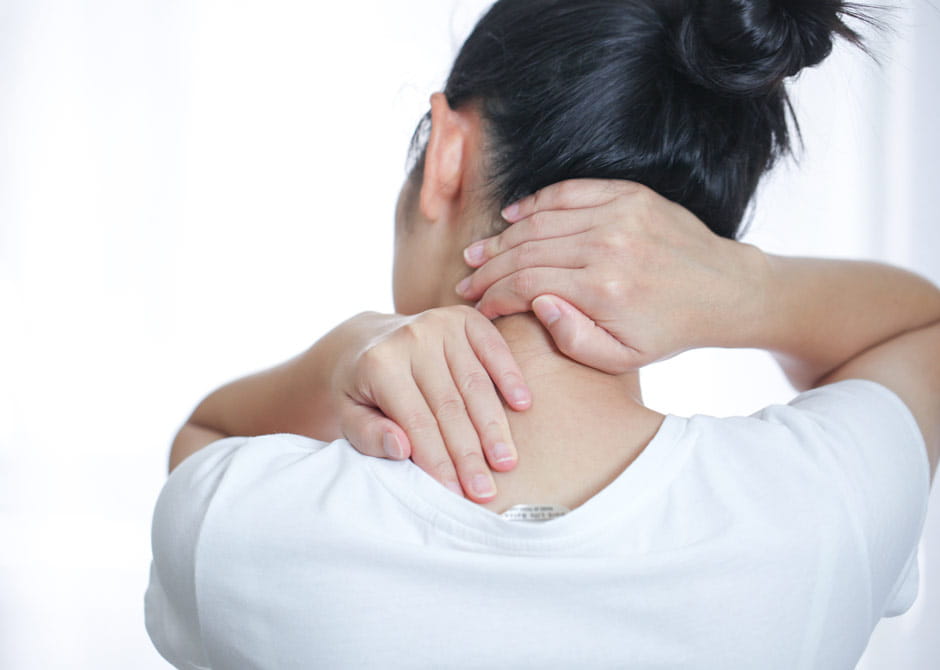What is cervical spinal stenosis?
 Cervical spinal stenosis is a narrowing of the spinal canal in your neck (cervical spine area). The spinal canal houses the spinal cord and nerves. The narrowing caused by spinal stenosis compresses the nerves in this canal, which results in pain and other symptoms. Symptoms may develop gradually over a long time and include pain in the neck and upper body.
Cervical spinal stenosis is a narrowing of the spinal canal in your neck (cervical spine area). The spinal canal houses the spinal cord and nerves. The narrowing caused by spinal stenosis compresses the nerves in this canal, which results in pain and other symptoms. Symptoms may develop gradually over a long time and include pain in the neck and upper body.
As the condition worsens, you may develop cervical myelopathy, a neurological condition that can affect fine motor skills and balance.
Mild cases of cervical spinal stenosis can possibly be treated with medication, injections, or physical therapy. If your symptoms are severe or if you have increased muscle weakness, you may need to consider surgery.
Conditions such as arthritis and scoliosis can worsen your spinal stenosis.
What are the symptoms of cervical spinal stenosis?
You may have cervical spinal stenosis without experiencing any symptoms.
Symptoms may appear if the narrowing progresses enough to press on your spinal cord or nerves in the neck area. Symptoms are likely to develop gradually over a long time and may include:
- Stiffness or pain in the neck or upper back
- Pain or weakness in the hands or upper extremities
- Balance and coordination problems, such as tripping while walking
- Loss of bowel or bladder control (in severe cases)
Causes of cervical spinal stenosis
Cervical spinal stenosis is caused by age-related changes in your spine. Many people over the age of 50 have some amount of narrowing of the spinal canal due to aging.
When you age, spinal discs can become larger (bulge) and ligaments can thicken, resulting in a narrower spinal canal.
Diagnosis of cervical spinal stenosis
Doctors diagnose cervical spinal stenosis with a careful medical history, physical and neurological exams, and imaging tests. Imaging tests may include X-rays, a magnetic resonance imaging (MRI) scan and a computed tomography (CT) scan.
As part of your physical exam, we may use the Modified Japanese Orthopaedic Association (mJOA) score — an international standard — to assess the severity of your spinal cord damage. The score measures numbness in your extremities, weakness and coordination problems, bladder and bowel problems, fine motor skills of the hands and balance issues.
Cervical spinal stenosis treatment
To provide the best results, we always begin our treatment options by offering the least-invasive options first. Possible treatments range from physical therapy to complex surgeries — and all can be done here at The Ohio State University Wexner Medical Center.
Most patients won’t need surgery to treat spinal stenosis.
Nonsurgical treatments
For mild cases of cervical spinal stenosis, pain and other symptoms can often be controlled with medication and physical therapy. The Ohio State Spine Care physical therapy program is staffed with experts specializing in spine conditions and disorders. Our team of physical therapists will help you build strength and flexibility with a customized plan just for you.
Additional nonsurgical treatment options include:
- Acupuncture and other injections
- Real-time ultrasound imaging of movement in the spine area to retain the deep stabilizing musculature of your spine
- Training help with balance
- Pilates, yoga and aquatic therapy to strengthen the back muscles
- Weight loss guidance to ease pressure on the spine
Surgical treatments
You might choose surgery if you have moderate to severe cervical spinal stenosis. Surgery can prevent further spinal cord damage and perhaps allow the spinal cord to recover over time with the aid of physical therapy.
Ohio State’s spine specialists perform more than 500 complex spine surgeries per year, more than anywhere in central Ohio. We use the least invasive surgical techniques possible to protect your spinal cord from future damage:
- Decompression surgery (laminectomy) is performed from the back of the neck, removes part of the vertebra (neck bone) and relieves pressure on your spinal cord. Our surgeon may use metallic plates and screws to prevent slippage of one vertebra over another.
- Spinal fusion surgery is sometimes used in the laminectomy procedure to fuse vertebrae and restore stability to the spinal column; for cord decompression from the front, spinal fusion and metallic plates and screws are always part of the procedure.
Research
Ohio State performs research and participates in clinical trials to better understand spine conditions and develop more effective treatments.
Areas of focus include:
Riluzole study [Efficacy of Riluzole in Patients with Cervical Spondylotic Myelopathy Undergoing Surgical Treatment, sponsored by nonprofit AO Spine]: We are the only center in Ohio — and one of only 12 in North America — participating in a study of the medication riluzole for patients who are candidates for surgery for myelopathy. We are helping to determine if taking riluzole in the weeks before and after surgery protects spinal cord nerve cells. Riluzole has already been approved for amyotrophic lateral sclerosis (ALS). We are evaluating the drug’s effectiveness in treating the severe symptoms of cervical stenosis, such as uncoordinated fine finger movements, gait imbalance, numbness and burning pain in the arms and legs.
Patient Education Animation Library
Spinal Stenosis
How would you like to schedule?
Don’t have MyChart? Create an account
